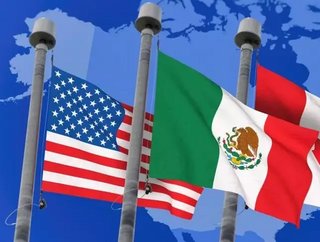Replacing NAFTA: what it means for the US

The North American Free Trade Agreement (NAFTA), established in 1994, has in recent years created trade tensions between its members: the US, Canada, and Mexico
On 30 September, the United-States-Mexico-Canada Agreement (USMCA) was informally agreed, bringing an end to re-negotiations of NAFTA triggered by President Trump and signalling significant changes in trade relations between the three countries.
Though the member states formally agreed to USMCA on 1 October, ratification and implementation of the new trade relationships is subject to a 60-day review process.
The replacement to the longstanding NAFTA has been inspired by changes in each member state’s economies, sectors, and relative outputs over the past 24 years, with USMCA hailed as an “agreement for the 21st Century” by US Trade Representative Robert Lighthizer and Canadian Foreign Affairs Minister Chrystia Freeland.
“USMCA will give our workers, farmers, ranchers and businesses a high-standard trade agreement that will result in freer markets, fairer trade and robust economic growth in our region,” they said in a joint statement.
“It will strengthen the middle class, and create good, well-paying jobs and new opportunities for the nearly half billion people who call North America home.”
USMCA will benefit the United States in numerable areas, and the new agreement will undergo a review process every six years, expiring after 16 years. The agreement’s lifespan can be increased during a review and will not require recertification from each member.
See more:
- Tesla posts record number of vehicles produced over a quarter
- General Electric appoints H. Lawrence Culp Jr as CEO, share price improves
- Red Lobster to cease use of plastic straws by 2020
The US will also enjoy increased duty thresholds from both Mexico and Canada, with both raising the limit for duty-free shipments of US goods to US$117.
Under the new trade agreement, the US will also have increased access to Canada’s dairy market, and the latter has also eliminated two major quota and pricing systems limiting trade.
As a result, the US will be able to export more dairy products to Canada at the equivalent of 3.6% of the Canadian market. The US will also benefit from duty-free exports of particular types of cheese to Mexico.
Various Canadian auto parts and vehicles will be excluded from US import tariffs, including 2.6mn passenger vehicles to be imported to the US annually, Canadian light trucks, and auto parts up to a value of US$32.4bn in declared customs value each year.
Mexico’s arrangement is similar, though Mexico will enjoy tariff-free exports of auto parts to the US up to a value of £108bn. Vehicles will qualify for the duty-free treatment provided 75% of their parts were manufactured in member states, up from 62.5%, and that 40-45% of used parts were made by workers earning at least $16 per hour.
Industry Week noted: “This provision is an incentive for automotive manufacturers to produce more goods in the United States, given its higher labor costs than those in Mexico.”
Under USMCA, Canadian steel will continue to suffer a 25% US import tariff, with 10% applied to aluminium.
- Replacing NAFTA: what it means for CanadaLeadership & Strategy
- Just 33% of Canadian business directors expect the economy to improve within five yearsLeadership & Strategy
- IMF: Canadian economy facing risks to competitiveness following US tax reformsLeadership & Strategy
- Canada hits back with $16.6bn duties after US imposes aluminum and steel tariffsCorporate Finance






